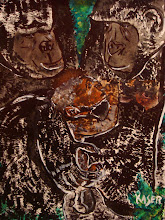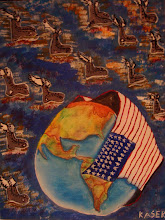My Physics level 2 kit:
 My Physics experiments manual:
My Physics experiments manual:
 Gravitational Motor: Earth gravity keep us firmly on the ground. The Earth's gravitational pull, gravity, must therefore be a force. But where does it came from? Between all bodies, there is a mutual force of attraction. The heavier the bodies, the greater the force. This mass attraction is call gravity, and it operates not just here on Earth but out in space as well. Why is one body heavier than another? Who determines its weight? Anwer: Mass. A body's mass is always the same whether the body is on Earth or on the Moon. The moment the mass of one body is attracted by the mass of another, the body obtains weght. Mass is indicated in kilograms (kg).
Gravitational Motor: Earth gravity keep us firmly on the ground. The Earth's gravitational pull, gravity, must therefore be a force. But where does it came from? Between all bodies, there is a mutual force of attraction. The heavier the bodies, the greater the force. This mass attraction is call gravity, and it operates not just here on Earth but out in space as well. Why is one body heavier than another? Who determines its weight? Anwer: Mass. A body's mass is always the same whether the body is on Earth or on the Moon. The moment the mass of one body is attracted by the mass of another, the body obtains weght. Mass is indicated in kilograms (kg).



 Force meter:
Force meter:Just as gravity ca make an object move faster, so can any other force-the force of my leg when I kick a soccer ball, for example. The unit of measure for force is the newton (N). One newton is the force that gives a mass of 1 kg the acceleration of 1 meter per second. A force is typically represented with an arrow indicating the size or magnitud of the force (in N), and the arrow's direction indicating the direction of the force's action. If two forces are acting on an object, they are added together in a parallelogram of forces. The force of gravity is used for many things, such as for powering pendulum clocks, to serve as a counterweight for elevators, and for obtaining electrical power in hydroelectric plants.
for example. The unit of measure for force is the newton (N). One newton is the force that gives a mass of 1 kg the acceleration of 1 meter per second. A force is typically represented with an arrow indicating the size or magnitud of the force (in N), and the arrow's direction indicating the direction of the force's action. If two forces are acting on an object, they are added together in a parallelogram of forces. The force of gravity is used for many things, such as for powering pendulum clocks, to serve as a counterweight for elevators, and for obtaining electrical power in hydroelectric plants.

 for example. The unit of measure for force is the newton (N). One newton is the force that gives a mass of 1 kg the acceleration of 1 meter per second. A force is typically represented with an arrow indicating the size or magnitud of the force (in N), and the arrow's direction indicating the direction of the force's action. If two forces are acting on an object, they are added together in a parallelogram of forces. The force of gravity is used for many things, such as for powering pendulum clocks, to serve as a counterweight for elevators, and for obtaining electrical power in hydroelectric plants.
for example. The unit of measure for force is the newton (N). One newton is the force that gives a mass of 1 kg the acceleration of 1 meter per second. A force is typically represented with an arrow indicating the size or magnitud of the force (in N), and the arrow's direction indicating the direction of the force's action. If two forces are acting on an object, they are added together in a parallelogram of forces. The force of gravity is used for many things, such as for powering pendulum clocks, to serve as a counterweight for elevators, and for obtaining electrical power in hydroelectric plants.


Catapult:
When I throw a ball as far as I can, gravity will eventually force my ball to land. The distance of its distance of its trajectory, or path, depends mostly on its weight, the right starting angle, and your own strength. Gravity even begins exerting its effect the very moment the ball is thrown. as long as the force applied upward and forward e











Balance Scale:
Levers show up everywhere, sometimes in the open and sometimes behind the scenes: as door handles, in the foot pedals of bicycles, in pliers. My arms and legs are levers, too. In order to measure and calculate the forces acting on a lever, it must be balance or equilibrium. Only when the balance scale is in precise balance before weighing will the weights accurately indicate the load on the oposite side.
The kind of lever that I used for my experiment is known as a two armed, or first-class, lever, due to the fact that the load and the force-relative to the pivot point-each has its own arm. 










 Fixed Pulley:
Fixed Pulley:



 Inclined Plane Meter:
Inclined Plane Meter:








 Waterwheel crane:
Waterwheel crane:











 Fixed Pulley:
Fixed Pulley: Have you ever watched a workman hoisting up a bucket at a construction site? He does it with a rope guided over a pulley attached to something up above. The fixed pulley is an equal-armed, two-sided lever, that rotates around its fulcrum as it works. Load arm and force arm are equally long, so it does not result in any savings in force. Nevertheless, it can make work easier, due to the fact that you can pull on the rope in the most convenient direction of force.
He does it with a rope guided over a pulley attached to something up above. The fixed pulley is an equal-armed, two-sided lever, that rotates around its fulcrum as it works. Load arm and force arm are equally long, so it does not result in any savings in force. Nevertheless, it can make work easier, due to the fact that you can pull on the rope in the most convenient direction of force.
 He does it with a rope guided over a pulley attached to something up above. The fixed pulley is an equal-armed, two-sided lever, that rotates around its fulcrum as it works. Load arm and force arm are equally long, so it does not result in any savings in force. Nevertheless, it can make work easier, due to the fact that you can pull on the rope in the most convenient direction of force.
He does it with a rope guided over a pulley attached to something up above. The fixed pulley is an equal-armed, two-sided lever, that rotates around its fulcrum as it works. Load arm and force arm are equally long, so it does not result in any savings in force. Nevertheless, it can make work easier, due to the fact that you can pull on the rope in the most convenient direction of force.With the movable pulley, force can be saved, but at the cost of increasing the distance. The suspended load is divided between two pieces of cord, so twice as much cord runs over the pulley, and half the force must cover double the distance. If a fixed and a movable pulley are put together to mae a combination pulley, their respective advantages are combined as well: convenient pulling direction and gain in force.

 Combination Pulley:
Combination Pulley:


 Combination Pulley:
Combination Pulley: 


 Inclined Plane Meter:
Inclined Plane Meter: When a bike path suddenly slopes upward and you have to push on the pedals a lot harder than you did on the flat ground. Then, you have to battle the force of the inclined plane's downhill slope. There are two additional forces that work on an inclined plane: the force of gravity (the weight of you and your bicycle) and in normal force, which works at right angles to the road.




 Bicycle:
Bicycle:





 Bicycle:
Bicycle:Transmition and gears,
The wheel has been around for over 6,000 years. Its discovery was revolutionary and it can still be found in half of all modern machines. Of course, all by itself a round disk is no machine. It has an axis in the center to serve as its pivot point, as in a car wheel, for example. That creates a circle consisting of an unlimited number of one-armed levers, each of wich "gets its turn" in sequence as the wheel rotates. In a car wheel, the load arm and the force arm are equally long. So there's no savings in force. Why, then, is the car wheel a simple machine that makes work easier? If I were to just drag the load over the ground without wheels, that would require more force, because I would have to overcome the resistance of friction.
When a large and a small wheel are attached together to a single axle, they form an unequal-armed lever, which can save force when turned. If the smaller wheel is mounted on its own axle, one can use the wheels to transfer force and rotary motion from one axle to the other.


 Acceleration Gearbox, helicopter:
Acceleration Gearbox, helicopter:



 Acceleration Gearbox, helicopter:
Acceleration Gearbox, helicopter:The rotary blades of a helicopter are mounted at a slant. As rotating inclined planes, they produce lift, which is intensified by the blades profile.
The propeller needs to have just a small rotation force but a high rotation speed. That happens ior two steps: The first is a gear wheel with 60 teeth, and the second is one with 20 teeth. With a single rotation of the large one, the smaller one turns three times. The transmission is therefore threefold (1:3) and double that: 3x3=9. The propeller turns three times as frequently as the crankshaft.





 Ball in flight:
Ball in flight:






 Ball in flight:
Ball in flight: Mass makes objects inert. When they rest,they want to stay in place. And when they move, they want to maintain their momentary movement. Only external forces can divert them from those behaviors. An object that is traveling in circular path would like to break out of that orbit and keep moving in straight line in whatever direction it's moving at that moment. When the depression in the gear wheel can no longer hold the ball, it flies away on a tangent- the "tangent" being a line that touches the circular path. Until then, centripetal force eep it in orbit. This force is directed toward the center. Against it, the ball "fights back" with an equally strong counter force, called centrifugal force. 
 Centrifugal Force Movie Theater:
Centrifugal Force Movie Theater:

 Centrifugal Force Movie Theater:
Centrifugal Force Movie Theater: My centrifugal force movie teather makes that force visible as the gear wheels swing out on its arms.










 Waterwheel crane:
Waterwheel crane:Machines make work easier.What exactly means work?
Example: I have two cartons, one weighing 50kg and the other weighing 20 kg. I need to push them 3m cross the floor to an elevator. Although I put all my force into it and work up quite a sweat, I can't budge the big one from its spot. Now I try to push the lighter one, and I successfully move it. I will say that the bigger one was "more work" than the smaller one. In physics work is only performed when a force moves an object a certain distance. Work is the product of force ans distance.
Hydroelecric power plants use this kind of work when provide us with electricity.








 Landsaler or Sail car:
Landsaler or Sail car:




 Dragster:
Dragster:














 Landsaler or Sail car:
Landsaler or Sail car:The power of wind can be used for locomotion. With a strong wind, the really speedy ones can reach speeds of over 150 km/h.






 Dragster:
Dragster:Energy is the capacity of an object to do work. Energy is indicated with the same units of measure as work. If water is resting in a reservoir, one talks in terms of potencial energy. This is changed into "movement" energy, or kinetic energy, when the water flows through the chute to the power plant, where the inetic energy is ransformed into work.
Energy therefore comes into different forms: Water supplies mechanical energy. In battery, there's electrical energy. Gasoline and heating oil have chemical energy, and the stretched rubber band I used in my dragster delivers mechanical energy.













 Movable pulley:
Movable pulley:






.jpg)








No comments:
Post a Comment